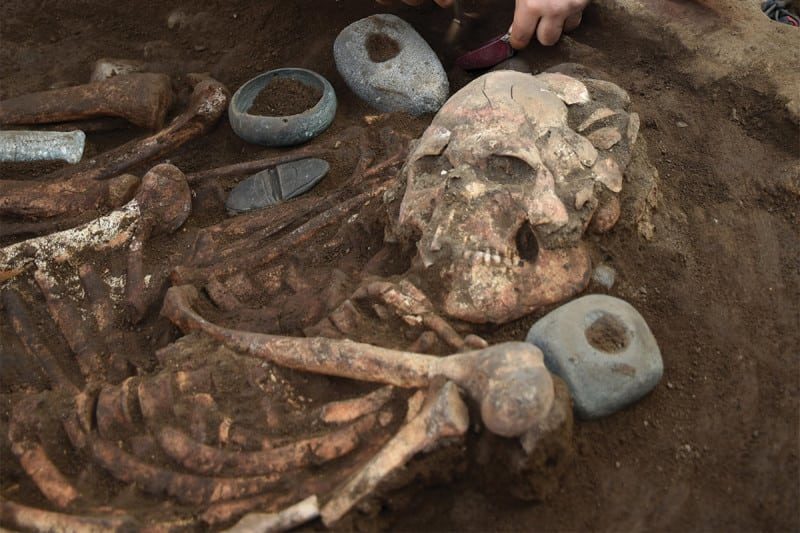
There is no obvious answer - but the weird prevalence of "surfer's ear" in the ancient community might shed new light on the way humans lived just before the farming revolution.
Körtik Tepe, a site in eastern Turkey, was first occupied between 12,400 and 11,250 years ago. This was a time of massive social change, when roaming hunter-gatherers first began living in permanent villages.
We know very little about the lives of those early villagers, other than that they continued to hunt and gather food rather than farming the land. To find out more, a team led by Yılmaz Erdal at Hacettepe University in Ankara, Turkey, examined 128 skeletons buried at the site.
Some 39 adults - 48 per cent of the adult population - had abnormal bony growths in at least one ear, and the condition was also seen in six of 16 children estimated to have died between their 6th and 12th birthdays.
Surf's up
Today, most researchers argue that the bony growths are a sign of regular exposure to cold water: they are seen in as many as three-quarters of keen surfers, which probably explains why the bony growths have been dubbed "surfer's ear".
Surfer's ear has been reported in ancient skeletons before but such a high prevalence is virtually unheard of. "The frequency of near 50 per cent in the adult sample is amazingly high," says Sébastien Villotte at the University of Bordeaux in Talence, France.
It seems likely that the people at Körtik Tepe regularly dived into nearby cold rivers - perhaps, says Villotte, because fish or other aquatic resources were an important part of their diet.
Sounds fishy
But Ian Kuijt at the University of Notre Dame, Indiana, isn't convinced by this fishing explanation, given that it's perfectly possible to fish from riverbanks. "They are unlikely to [have been] diving for fish," he says.
Reuven Yeshurun at the University of Haifa, Israel, also pours cold water on the fishing idea. "Körtik Tepe is one of the richest of the earliest permanent settlements in the region," he says. "What it does not have, however, is solid evidence for fishing as a dietary staple."
Relatively few fish bones have been found at the site, he says, and nitrogen levels in the human bones aren't consistent with an aquatic diet.
So what was going on? Erdal's team speculate that the ancient people spent plenty of time in the chilly waters of nearby rivers to keep clean, or even simply for entertainment. "[They] certainly could have engaged in swimming and diving activities, which is a kind of leisure activity we never really associate with Stone Age people," says Yeshurun.
Kuijt thinks several factors might have encouraged the ancient people to spend so much time in water. "Swimming, bathing, playing, personal care all are possible contributors," he says.
"These villages would not have been clean or healthy places - [although] I'm not sure this can be pushed as a rationale for increased bathing."
Whatever the explanation, there is agreement that the new findings provide a fascinating - if still puzzling - glimpse into life just before the farming revolution. "It is unusual to get this detailed perspective into early villages," says Kuijt.
Journal reference: International Journal of Osteoarchaeology, DOI: 10.1002/oa.2674



This short, sharp deep freeze lasted for 1,200 years until 9600 BC when the warming trend resumed, global temperatures shot up again and the remaining ice caps melted very suddenly, dumping all the water they contained into the oceans.
Figure 12: All of human history as it is presently taught to us follows the Younger Dryas – the mysterious cataclysmic period between 10,800 BC (around 12,800 years ago) and 9,600 BC (around 11,600 years ago).
Hancock, Graham. Magicians of the Gods: The Forgotten Wisdom of Earth's Lost Civilisation – the Sequel to Fingerprints of the Gods (p. 39). Hodder & Stoughton. Kindle Edition.
Figure 12 would not paste and you will have to read the Kindle edition, which I recommend. [Link]